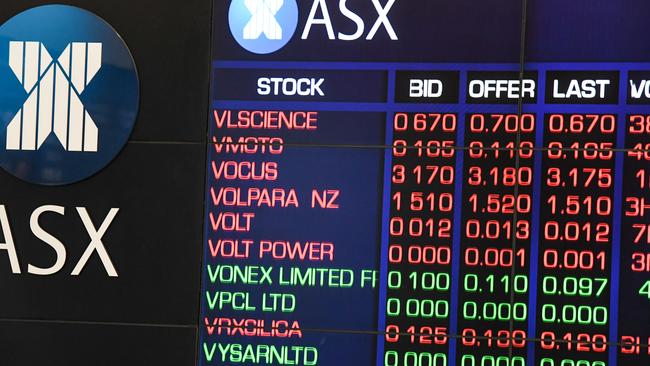Actively managed ETFs a way to survive wild market swings
Low-volatility exchange traded funds offer a recipe for peace of mind in lively sharemarkets.

It’s been clear for some time now that, after a long period of low volatility, investors are having to get used to regular daily market swings of 1 per cent or higher.
Earlier this month, rising concerns over the fragility of the US economy, the ongoing US-China trade ructions and a range of other economic and geopolitical fears triggered the biggest sharemarket falls of the year, including a near 3 per cent drop on the Australian Securities Exchange.
When markets do become quite volatile, there will typically be some degree of asset shifting by investors out of equity markets into lower-risk, lower-return allocations such as fixed income and cash. Gold has also been a big beneficiary of the recent volatility.
Ideally, investors shouldn’t pay attention to the markets’ day-to-day movements or react to volatility with kneejerk asset allocation decisions.
It’s vital to have a long-term asset allocation plan to stick to, even when markets might appear to be in free fall.
In an environment of record low interest rates, a growing number of investors and financial advisers are choosing to stay the course in equity markets to achieve higher returns by using more sophisticated strategies aimed at minimising portfolio volatility.
This has seen an acceleration of investment inflows into actively managed exchange traded funds (ETFs) labelled as either low or minimum volatility funds, which have been specifically designed to dampen the impact of broader markets volatility.
These types of funds are designed to appeal to investors who desire a less volatile experience or want to reduce risk with a degree of downside market protection while maintaining the ability to participate in the upside potential of the broad equity market.
Used properly as a portfolio strategy, low or minimum volatility funds can complement other equity allocations and potentially provide similar risk characteristics to a fund with a 70 per cent equities and 30 per cent fixed income split.
Low and minimum volatility strategies are both based on the observation that some shares have lower-than-market volatility characteristics but do not deliver lower-than-market returns.
This means a fund can invest across a large group of shares that have demonstrated lower volatility than the market over a period of time and can achieve better risk-adjusted returns than by investing in the broader market.
Share weightings are generally determined through a portfolio optimisation process that seeks to construct the least volatile portfolio on a forward looking basis. The shares distribution is narrower, protecting more on the downside risk, and adding currency hedging to a strategy will also eliminate foreign exchange risk.
Volatility edge
As with all investment strategies, it is important investors understand the fundamental differences between low volatility and minimum volatility funds and ETFs. While similar, they don’t take exactly the same approaches to reducing portfolio volatility.
A low-volatility fund will generally use market volatility measures to identify and remove the most volatile shares, ending up with a portfolio of the lowest volatility shares.
While effective, a potential problem with this approach is that it can lead to concentration risk. That’s because simply sifting out high-volatility shares will tend to leave behind a large number of companies in sectors that are less prone to volatility, such as infrastructure, utilities and property.
Minimum volatility, on the other hand, looks for shares with low levels of expected volatility, but also considers how shares behave relative to one another. Therefore, they can overweight volatile shares if their low correlations with other holdings are expected to reduce the portfolio’s overall volatility, thereby ending up with a more diversified portfolio with less sector concentration risk that will help to improve risk-adjusted returns.
Further diversification can be achieved through the inclusion of rules relating to company, sector and country weightings.
It works out
The results speak for themselves. On an Australian dollar hedged basis over rolling three-year periods, Vanguard data shows that a minimum volatility approach has achieved 30-40 per cent average reductions in portfolio volatility against the broader market.
In the recent ASX market slump on August 5, investors in the Vanguard Global Minimum Volatility Fund experienced a fall of 1.68 per cent on the day versus the 2.6 per cent drop on the benchmark FTSE Global All Cap Index (Hedged Australian dollar). Over the last three months to the end of July, the volatility reduction achieved against the broader market has been 36.65 per cent.
Low-risk strategies are attractive because they can provide a smoother investment ride than a broader market index.
And, the growth in funds under management within low and minimum volatility funds is a sign of proactive interest by investors wanting to use them as a complement to their broader equities markets exposures.
A minimum volatility strategy can help investors weather volatile markets but, as with any active investment strategy, it’s important to take the time to understand the objectives and be cognisant of the risks, which may include periods of underperformance.
Tony Kaye is a personal finance writer at Vanguard Australia.



The heightened volatility in global equity markets has spurred many investors to seek shelter in calmer investment waters.